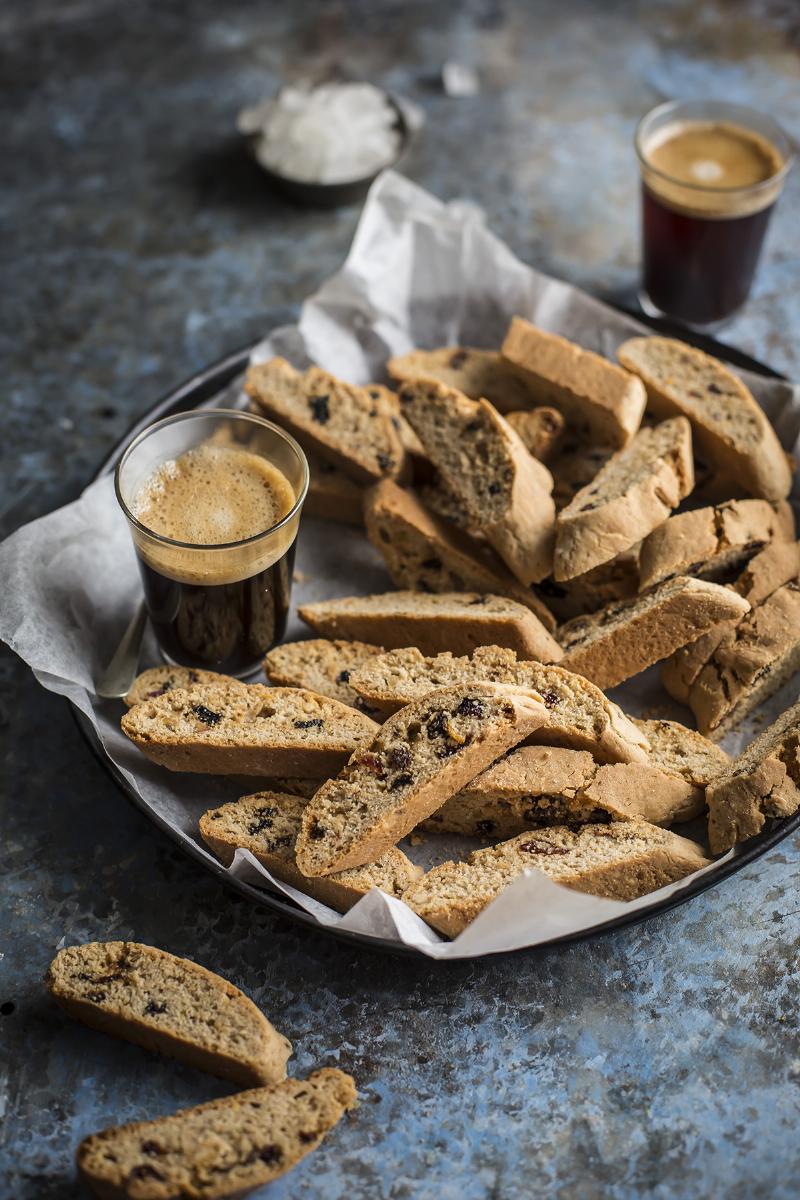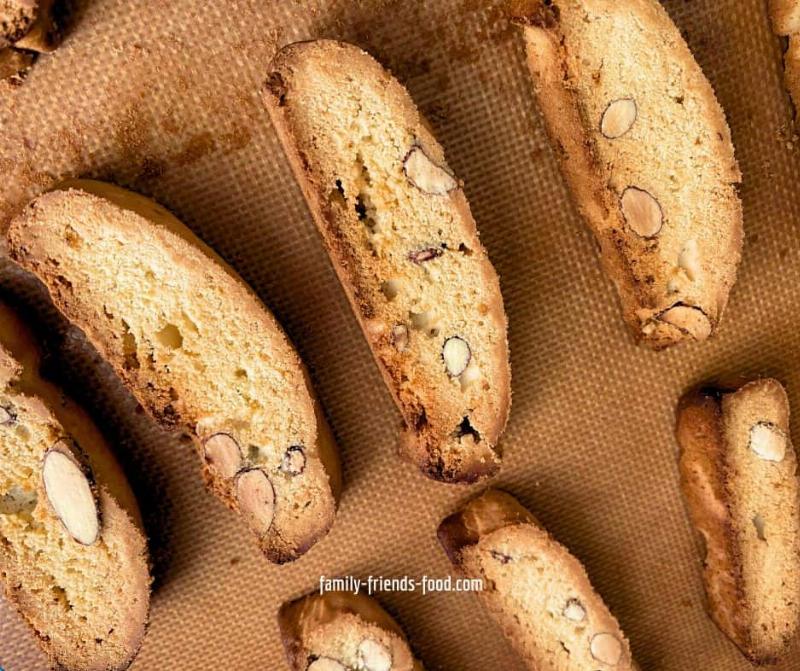Biscotti, those twice-baked, delightfully crunchy Italian cookies, are perfect for dunking in coffee or enjoying as a sweet treat. Ever wondered how to achieve that signature snap? This guide dives deep into the art of making crunchy biscotti from scratch, revealing all the tips and techniques you need to bake a batch you’ll be proud of. From choosing the right ingredients to mastering the double-baking process, we’ll cover everything to ensure your biscotti are perfectly crisp and bursting with flavor. Ready to elevate your baking game? Let’s get started!
Table Of Contents
- The Secret to Crunchy Biscotti: Double Baking
- Choosing the Right Ingredients
- Mixing and Shaping the Dough
- The First Bake: Setting the Stage
- Slicing and the Second Bake: The Crunch Factor
- Achieving the Perfect Crunch
- Flavor Variations and Creative Twists
- Storing Your Crunchy Creations
- FAQ: Your Biscotti Questions Answered
Biscotti, meaning “twice-baked” in Italian, are known for their distinct texture. Achieving that satisfying crunch isn’t just about following a recipe; it’s about understanding the science behind it. This guide will take you through every step of the process, from mixing the dough to the final bake, ensuring your biscotti turn out perfectly crunchy every time. We’ll even explore variations and flavor combinations so you can personalize your biscotti creations. How exciting is that?
The Secret to Crunchy Biscotti: Double Baking
The key to crunchy biscotti lies in the double baking. The first bake sets the shape and creates a slightly soft loaf. The second bake dries out the loaf, creating that characteristic snap. But there’s more to it than just sticking it back in the oven. Temperature, time, and even the angle at which you slice the loaves play a crucial role. Have you ever tried making biscotti and ended up with something more like a soft cookie? It’s a common mistake, but one that’s easily avoided with the right technique.
Choosing the Right Ingredients
The foundation of any great biscotti starts with quality ingredients. While the core ingredients are simple – flour, sugar, eggs, and butter – choosing the right type and quality can make a significant difference. For example, using almond flour adds a delicate nutty flavor and contributes to a lighter texture. What about adding a touch of citrus zest? The possibilities are endless!
 Biscotti Dough Ingredients
Biscotti Dough Ingredients
Mixing and Shaping the Dough
Biscotti dough is typically drier and less sticky than regular cookie dough. This allows it to be shaped into logs for baking. Don’t be afraid to get your hands dirty! Kneading the dough properly helps develop gluten, which gives the biscotti structure and prevents them from crumbling too easily. Think of it like building a strong foundation for your crunchy creations.
The First Bake: Setting the Stage
The first bake transforms the dough logs into a partially cooked loaf. This initial bake is crucial for setting the shape and creating a base for the second bake. It’s like preheating an oven – essential for achieving the desired result. Overbaking at this stage can lead to dry, crumbly biscotti, so keep a close eye on the timer.
 Biscotti First Bake Loaf
Biscotti First Bake Loaf
Slicing and the Second Bake: The Crunch Factor
Once the loaves have cooled slightly after the first bake, it’s time to slice them. A sharp serrated knife is your best friend here. Aim for slices that are about ½ to ¾ inch thick. The angle at which you slice also affects the final texture. Slicing at a slight angle creates a larger surface area, resulting in crispier biscotti. Ever noticed how professional bakers make it look so effortless? Practice makes perfect!
Achieving the Perfect Crunch
The second bake is where the magic happens. Lowering the oven temperature and baking the slices low and slow dries them out, creating that signature crunch. Don’t rush this process! Patience is key to achieving biscotti perfection. What’s the rush? Enjoy the anticipation of those crunchy delights!
 Sliced Biscotti Second Bake
Sliced Biscotti Second Bake
Flavor Variations and Creative Twists
Once you’ve mastered the basic biscotti recipe, the flavor possibilities are endless. From classic almond biscotti to variations with chocolate, dried fruit, or spices, there’s a biscotti for every palate. What about adding a hint of orange zest and cranberries for a festive twist? Get creative and experiment with different combinations to find your favorites.
Storing Your Crunchy Creations
Properly stored, biscotti can stay crunchy for weeks. An airtight container at room temperature is the best way to preserve their texture. Imagine having a stash of homemade biscotti ready to enjoy with your morning coffee whenever you want!
FAQ: Your Biscotti Questions Answered
Q: Can I use a different type of flour?
A: While all-purpose flour is recommended, you can experiment with other flours like whole wheat or spelt, keeping in mind that they may affect the final texture.
Q: My biscotti are too hard. What did I do wrong?
A: Overbaking is the most likely culprit. Try reducing the baking time for the second bake, or checking them frequently towards the end.
Q: Can I freeze biscotti dough?
A: Absolutely! Wrap the dough logs tightly in plastic wrap and freeze for up to 3 months. Thaw overnight in the refrigerator before baking.
Q: What are some good flavor combinations for biscotti?
A: The possibilities are endless! Try chocolate and hazelnut, pistachio and cranberry, or lemon and poppy seed.
Q: What is the best way to enjoy biscotti?
A: Biscotti are traditionally enjoyed dipped in coffee, tea, or dessert wine.
In conclusion, making crunchy biscotti from scratch is a rewarding experience. By following these tips and techniques, you’ll be able to create a batch that is perfectly crisp, flavorful, and sure to impress. So gather your ingredients, preheat your oven, and get ready to bake some delicious biscotti!

Pingback: Best Almond Biscotti Recipes: A Crunchy Delight - Bestbaking Recipes